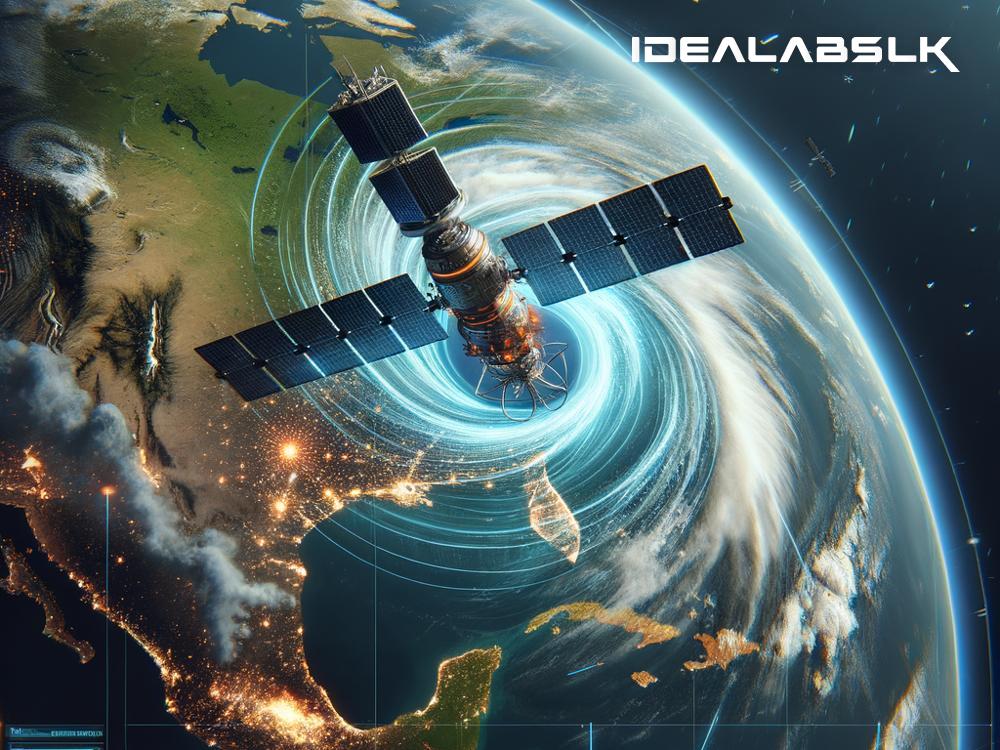Title: The Expanding Power of Space Technology in Earth's Battle with Natural Disasters
In recent years, we've been witnessing an incredible technology leap forward that's not only taking us towards the stars but also providing us invaluable assistance right here on our own planet. The emerging star of this technological advancement is space-based data, a powerful tool reshaping how we predict, respond to, and ultimately prepare for the natural disasters Earth throws our way. By 2024, the role of this high-tech helper is predicted to grow even larger, revolutionizing our approach to disaster management.
The Eye in the Sky
Imagine having an eye that can scan the whole world in just a few moments, spotting cyclones forming over oceans, tracking wildfire outbreaks, or observing volcanic activities. That's exactly what satellites orbiting Earth are capable of doing. These modern marvels are equipped with cameras and sensors that can capture detailed images and gather critical data from every corner of our planet.
This capability is particularly transformative for predicting natural disasters. For example, by monitoring temperature changes in the ocean, satellites can help forecast hurricanes and cyclones with greater accuracy, giving communities more time to evacuate or prepare. Similarly, by observing the dryness of forests and changes in vegetation, they can also predict areas at higher risk of wildfires.
Real-Time Rescue Operations
Beyond prediction, space-based data plays a crucial role during and after natural disasters strike. Satellite images can quickly reveal the extent of damage in affected areas, making it easier for rescue teams to prioritize their efforts and allocate resources more effectively. This real-time information can be life-saving, especially in situations where traditional communication systems are down.
Moreover, satellites equipped with Synthetic Aperture Radar (SAR) can even penetrate cloud coverage and provide images during storms or at nighttime, ensuring continuous monitoring of ongoing disasters. This capability can be especially crucial during prolonged events, like flooding or hurricanes, where conditions can change rapidly.
A Global Collaboration for a Global Challenge
The fight against natural disasters is a global challenge that requires a global response. Luckily, space-based data is at the forefront of fostering international cooperation. Organizations like the United Nations Office for Outer Space Affairs (UNOOSA) and the European Space Agency (ESA) are working on projects that make satellite data accessible to countries around the world, especially those lacking the resources to launch their own space missions.
One such initiative is the International Charter "Space and Major Disasters," which allows member countries to access a pool of satellites from different agencies around the world in the event of a major disaster. This not only democratizes space data but also enhances the global capacity to respond to emergencies in a coordinated manner.
Challenges and Future Horizons
While the potential of space-based data in managing natural disasters is immense, there are challenges to address. The sheer volume of data generated by satellites presents a significant processing challenge, requiring sophisticated algorithms and substantial computing power to turn raw data into actionable insights.
Furthermore, ensuring global access to this data remains a challenge. While international initiatives are a step in the right direction, there's still a need for more inclusive policies that enable countries at all levels of development to benefit from space technology.
Looking ahead, advancements in satellite technology and data analytics promise to further enhance our capabilities. For instance, the development of smaller, cheaper satellites, known as CubeSats, opens up the possibility for more countries to deploy their own space-based observation systems. Additionally, advancements in artificial intelligence and machine learning are making it faster and easier to analyze satellite data, providing quicker and more accurate insights into disaster prediction and response.
In Conclusion
By 2024, the role of space-based data in predicting and responding to natural disasters is expected to grow significantly, offering new hope in our struggle against the forces of nature. With its unparalleled overview and rich, detailed data, space technology is becoming an indispensable ally in safeguarding lives and livelihoods against the ever-present threat of natural disasters.
As we continue to push the boundaries of what's possible in space, we're also bringing the benefits of these advancements back to Earth, demonstrating that the final frontier can also be a source of hope and protection for humanity's most vulnerable moments. Through international collaboration and technological innovation, the sky's the limit for what we can achieve in disaster management.

